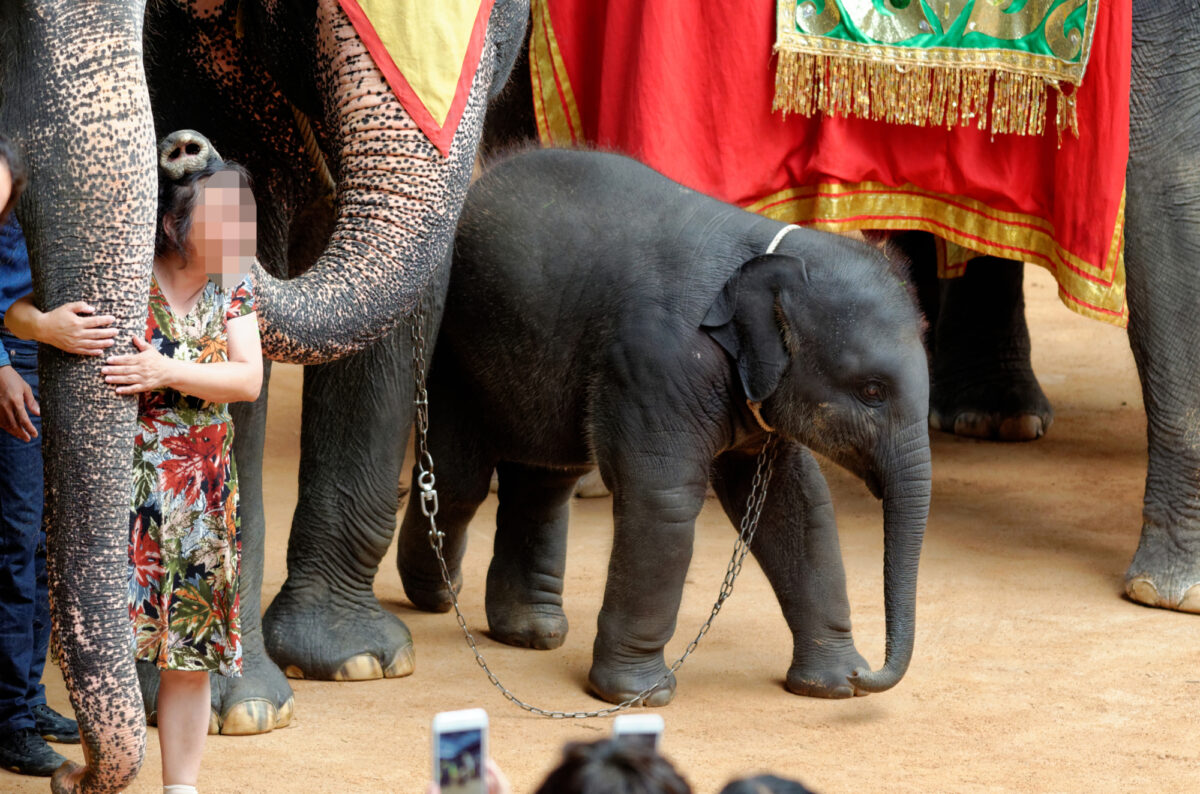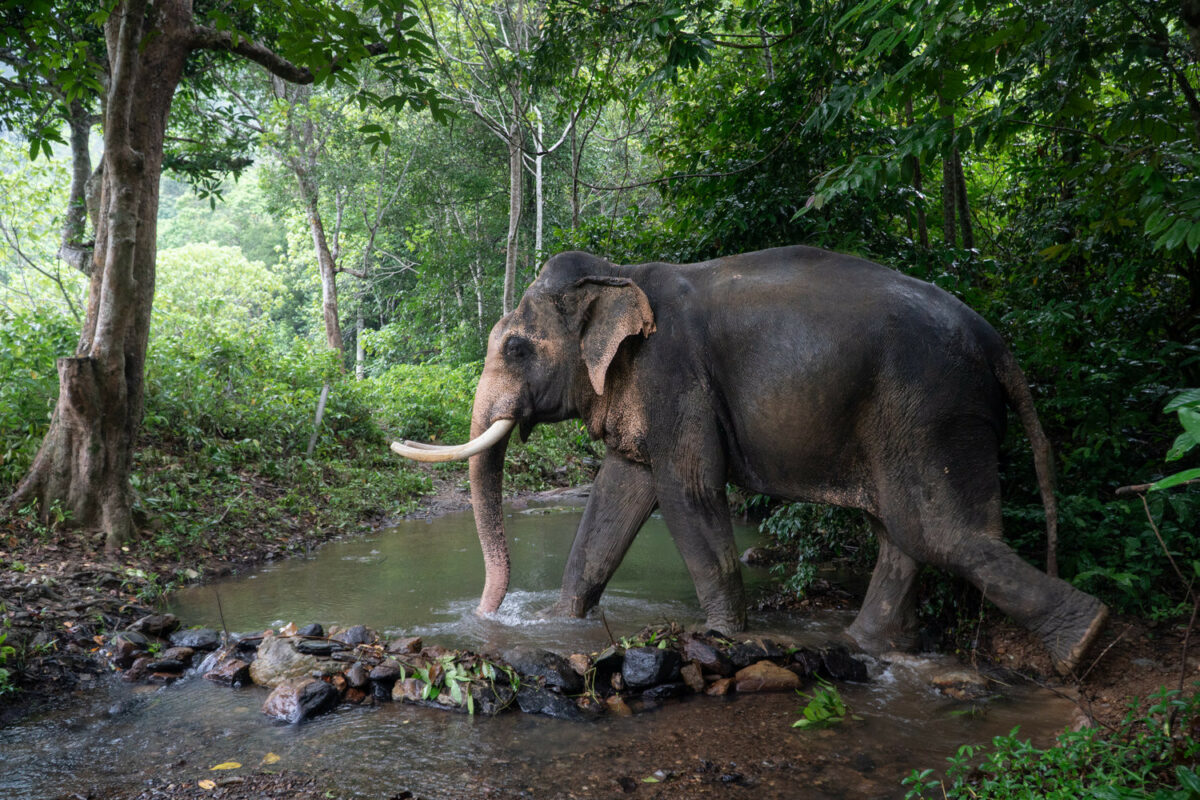Ethical travel: Is it ever right to see elephants in captivity?
Can a venue ever be truly elephant-friendly?
Elephants have been used by people as working animals for more than 3,000 years in the logging industry, as ceremonial animals and for transportation across Asia. In Thailand, the elephant is a national symbol and in every market or shop, you’ll find bags, t-shirts and trousers emblazoned with elephants.
Most of the elephants in Thailand were used in the logging industry until a ban on commercial forestry in 1989 left many elephant owners without an income – and no choice but to look for alternative uses for their elephants. At this point, a large number of elephants were moved into the tourism industry to give rides and shows for visitors.

World Animal Protection’s recent study revealed that almost 80% of the 3,000 elephants used at tourist venues across Asia were living in severely inadequate conditions, with almost all of the elephants kept in these conditions at venues offering elephant rides.
We also found that between 2010 and 2017, there was a 30% rise in the number of elephants at tourism venues in Thailand. This corresponds to a rise in the number of tourists.
Elephants are not domesticated and many are taken directly from the wild. Even those bred in captivity are only first or second generation and have not been bred to begin the process of domestication (which takes a minimum of twelve generations). You may be told that they are domesticated to alleviate your concerns about their captivity – but these are wild animals that belong in the wild.
It is also worth noting that there are no rules around the naming of elephant attractions so a venue may call itself a sanctuary, a rescue centre or even a retirement home for elephants and still not be ‘elephant-friendly’.
Can a venue ever be 'elephant friendly?'
So how can you tell which venues are ‘elephant-friendly’? Well, there are a few signs to look out for when you are visiting an elephant venue.
Elephants are wild animals. If a venue allows you to get close enough to ride, bathe with or touch the elephants, it is highly likely that they have been cruelly trained at an early age. Public perceptions of elephant riding are becoming much less socially acceptable, so venues now present bathing with elephants as an alternative, ‘more ethical’ option. However, all close interactions with an elephant – including bathing – are the result of fear and pain.
In the wild, elephants can spend their days roaming, grazing and socialising over long distances. An elephant-friendly venue will allow elephants to move freely and express as many of their natural behaviours as possible.

There is no denying that baby elephants are incredibly cute and this makes them a big draw for tourists. However, a truly elephant-friendly venue should not be breeding elephants into captivity. With the exception of orphanages that rescue abandoned baby elephants, there should not be baby elephants in a captive environment.
What do we mean by ‘cruelly trained’?
Elephants are large, strong and unpredictable wild animals. In order for an elephant to be used for work, such as logging or entertainment, the handler needs to be able to control them. The process of gaining control over an elephant often starts when they are young.
There are many names for this, including ‘breaking-in’, ‘the crush’ or ‘phajaan’. Typically, a calf is separated from its mother at a young age and restrained. It may then be beaten, isolated and sleep-deprived until its spirit is broken and it is obedient to the handler.
Bull hooks (nails on long sticks) are often used, sometimes discreetly, during shows or rides to keep control of the animals. When you see captive elephants displaying stereotypic, or repetitive behaviours, this is a sign that the animal is suffering from a stress disorder related to fear and anxiety. In fact, a report in 2016 found that the majority of 53 captive Asian elephants studied showed symptoms similar to PTSD in humans, concluding that ‘the terror and pain experienced by elephants during violent forms of the phajaan, in addition to the psychophysiological damage caused by separation from mother, family and community, profoundly damages elephant minds, bodies, and society’ (Rizzolo and Bradshaw, 2016).
What travellers need to know
There are a number of elephant venues trying to make life better for existing captive elephants and create as close to a natural environment for them as possible. By visiting venues that are putting the elephants first, not only do you have a more rewarding experience, but you show that you want the industry to change – that you don’t need to see an elephant paint (while being controlled by sharp jabs of a nail) or being made to carry three people and a seat on its back. If business owners realise that people want to see elephants just being elephants, then slowly the industry will move to provide that.
If you find yourself in a venue that makes you feel uncomfortable either tell somebody there your concerns or, if you are not comfortable doing that then wait till you are home, leave your feedback on a review site so that other travellers know to avoid it.




